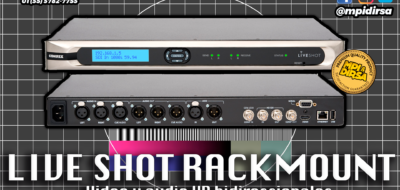By Doug Lane – Independent Radio Engineer
BRIC-Links connect venues and prove to be most valuable codecs
Devens, Massachusetts — About 25 years ago one of the largest professional sports leagues in the United States contacted me to work on their nationwide ISDN installation and since then I’ve helped them maintain the equipment in all of their arenas. However, several years ago, it became clear to me that ISDN would soon be coming to its useful end, and that we would soon need to find new equipment. I proposed switching to IP codecs, and after a period of discussion, we began searching for something that would fit our needs.
 We needed a solution that would enable visiting teams to broadcast back to their home radio station. Some teams broadcast directly to the flagship radio station itself, and others broadcast to a producer who creates a fully-mixed program to send to a satellite. For this reason, we wanted a codec that was versatile enough to handle all of these use cases.
We needed a solution that would enable visiting teams to broadcast back to their home radio station. Some teams broadcast directly to the flagship radio station itself, and others broadcast to a producer who creates a fully-mixed program to send to a satellite. For this reason, we wanted a codec that was versatile enough to handle all of these use cases.
Additionally, this sports league has 30 arenas across the United Stated, and we knew we wanted to install multiple codecs in each. Because we were planning to buy nearly a hundred codecs, we knew we wanted something cost-effective. We decided to buy Comrex BRIC-Links because they could be controlled remotely, and because we felt they were the most appropriate tool for our applications.
We installed three BRIC-Links in each arena, plus additional units as fail-safes as requested by individual owners. We installed a T1 connection in each arena, and connected the BRIC-Links to it. The T1 has a guaranteed throughput of 1.5 Mbps, and the BRIC-Links are set to code with ACC mono. Altogether, the BRIC-Links only consume about a third of the available bandwidth on the T1, so we have never worried about overwhelming the connection or experiencing a network failure.
Since the BRIC-Links were put into use several years ago, there have been minimal issues. None of the more than a hundred units that were installed have failed or needed to be replaced. We’ve only had a few glitches per year across our network since installation. Though installation itself was a challenge, because each venue needed a unique set-up, and coordinating the IP connection required collaboration between departments, maintenance has been simple. BRIC-Link’s web-based control interface has enable me to do firmware updates and adjust settings remotely.
The reliability of BRIC-Links has paid off significantly — we know that visiting engineers will be able to use the equipment to complete their broadcasts. The units are low maintenance, and require little interference from us. BRIC-Link has been a solid, versatile IP codec that has served us just as well as the ISDN codecs that came before it.
via Radio World


